Discover the art meaning and definition of garnish in cooking with this comprehensive analysis. Learn about the meaning, purpose, types, techniques, cultural significance, and common mistakes in garnishing. Elevate your culinary presentations and enhance your dishes’ visual appeal and flavor with expert insights and practical tips.
Meaning and Definition of Garnish in Cooking: A Comprehensive Analysis
Garnish in cooking refers to edible elements added to enhance the visual appeal, flavor, or texture of a dish. Originating from the Old French word garnir, it serves both aesthetic and functional purposes, distinguishing it from condiments by prioritizing presentation while still contributing to the dish’s overall taste.
Introduction
In the culinary arts, garnishing represents a fundamental practice that enhances the aesthetic and sensory qualities of a dish. By adding small, edible elements, chefs and home cooks alike can elevate the presentation and flavor profile of their creations.
This article provides a detailed examination of the meaning and definition of garnish, both in general terms and specifically within the context of cooking.
It explores the purpose, types, techniques, cultural significance, historical context, and common mistakes associated with garnishing, offering a thorough understanding of its role in culinary practice. The discussion is structured to provide clarity and precision, ensuring that readers gain actionable insights into this essential aspect of food preparation.
Meaning and Definition of Garnish
In general terms, a garnish is an embellishment or decorative addition applied to enhance the appearance or appeal of an object or creation. The term derives from the Old French word garnir, meaning to provide or furnish, reflecting its role in adding a finishing touch. In the context of cooking, a garnish is defined as an edible item or substance added to a prepared food or drink to enhance its visual appeal, flavor, or texture.
Unlike condiments, which are primarily used to augment flavor, garnishment often prioritize aesthetic enhancement while also contributing subtle taste or textural elements. According to the Encyclopaedia Britannica, garnishment provide “contrast in colour, texture, and taste, and give a finished appearance to the dish”. This dual role distinguishes garnishing as both an artistic and functional practice in culinary preparation.
Purpose of Garnishing
Garnishing serves multiple objectives in culinary practice, each contributing to an enhanced dining experience:
- Visual Enhancement 👀: It add color, contrast, and visual interest, making dishes more appealing and appetizing. A well-placed garnish can transform a simple plate into a visually striking presentation, stimulating the diner’s appetite.
- Flavor Enhancement 👅: Certain garnishes, such as fresh herbs or citrus zest, introduce complementary flavors that elevate the dish’s taste profile. For example, a sprinkle of chopped cilantro can add freshness to a spicy curry.
- Texture Contrast 🤏: It introduce varied textures, such as the crunch of toasted nuts or the creaminess of a sauce drizzle, enhancing the sensory experience.
- Cultural Significance 🌍: In many cuisines, it carry traditional or symbolic meaning, adding authenticity and depth to the dining experience. For instance, Japanese cuisine often uses shiso leaves to signify freshness and balance.
These purposes collectively ensure that garnishment contribute to both the aesthetic and sensory qualities of a dish, creating a cohesive and memorable culinary experience.
Types of Garnishes
Garnishes encompass a wide variety of edible items, selected based on their ability to complement the dish’s flavor, color, or texture. The following table summarizes common types of garnishment and their applications:
| Garnish Type | Examples | Applications |
|---|---|---|
| Herbs 🌿 | Parsley, cilantro, basil, mint | Adds freshness and color to soups, salads, and main dishes |
| Citrus 🍋 | Lemon/lime wedges, zest, twists | Enhances seafood, desserts, and beverages with acidity |
| Vegetables 🥒 | Carved radishes, cucumber slices, tomatoes | Provides visual contrast and crunch to various dishes |
| Sauces 🥫 | Olive oil drizzles, balsamic reduction | Adds flavor and artistic flair to plates |
| Edible Flowers 🌸 | Nasturtiums, pansies | Offers elegance to desserts and salads |
| Nuts and Seeds 🥜 | Toasted almonds, sesame seeds, pumpkin seeds | Introduces crunch to soups, salads, and main courses |
| Spices 🌶️ | Paprika, chili flakes, black pepper | Adds color and subtle heat to dishes |
These garnishes are selected to align with the dish’s flavor profile and cultural context, ensuring a harmonious presentation.
Techniques for Effective Garnishing
Effective garnishing requires a balance of creativity and restraint to ensure the garnish enhances rather than overshadows the dish. Key techniques include:
- Simplicity: Opt for minimal garnishment, such as a single herb sprig or citrus slice, to maintain elegance without overwhelming the dish.
- Flavor Complementarity: Select garnishment that enhance the dish’s primary flavors, such as a lemon wedge for grilled fish to add acidity.
- Color Contrast: Choose garnishment that contrast with the dish’s colors, such as green herbs on a creamy soup, to enhance visual appeal.
- Freshness: Use fresh, high-quality ingredients to ensure vibrant appearance and taste, avoiding wilted or dried garnishment.
- Balance and Symmetry: Arrange garnishment thoughtfully to create a visually balanced presentation, considering the plate’s overall aesthetic.
These techniques ensure that garnishment contribute to a polished and professional culinary presentation.
Cultural Perspectives
Garnishing practices vary significantly across global cuisines, reflecting cultural traditions and culinary philosophies:
- Japanese Cuisine 🇯🇵: Employs garnishment like shiso leaves, pickled ginger, or kizami nori to enhance freshness and balance, often with symbolic significance.
- Mexican Cuisine 🇲🇽: Utilizes cilantro, lime wedges, and chili flakes to add vibrant flavors and colors, complementing spicy and savory dishes.
- French Cuisine 🇫🇷: Features delicate garnishment, such as finely chopped herbs or sauce drizzles, to emphasize elegance and refinement.
- Indian Cuisine 🇮🇳: Incorporates garnishment like coriander leaves or fried onions in thalis to enhance flavor and visual appeal, complementing the meal’s diverse components.
These cultural variations highlight the diverse roles garnishes play in enhancing authenticity and sensory experience.
Historical Context
The practice of garnishing has historical roots in culinary traditions, particularly in classic French cuisine, where garnishment encompassed any accompaniment to a principal dish, including vegetables and starches. During the Renaissance, elaborate garnishment were used to signify wealth and sophistication, with intricately carved fruits and vegetables adorning banquet tables.
Over time, garnishing evolved to focus on both aesthetic and functional enhancements, with modern practices emphasizing simplicity and complementarity. The term “garnish” itself derives from the Old French garnir, meaning to furnish or adorn, reflecting its historical role as a decorative element.
Common Garnishing Mistakes
To ensure effective garnishing, practitioners should avoid the following pitfalls:
- Overloading the Dish ❌: Excessive side dish can overwhelm the dish’s appearance and flavor, detracting from its appeal.
- Inappropriate Pairings 🚫: Selecting side dish that clash with the dish’s flavor profile, such as sweet garnishes on savory dishes, can disrupt harmony.
- Non-Edible Elements ⚠️: Using non-edible decorations, such as plastic grass, instead of edible side dish can confuse diners.
- Poor Presentation 😕: Sloppily placed side dish can diminish the dish’s aesthetic, undermining the intended effect.
By avoiding these mistakes, cooks can ensure side dish enhance rather than detract from the dining experience.
Comparison of Garnish and Condiment
To clarify the role of garnishes, it is useful to distinguish them from condiments, as both are often confused:
| Aspect | Garnish | Condiment |
|---|---|---|
| Primary Purpose | Enhances visual appeal and flavor 👀👅 | Primarily enhances flavor 👅 |
| Edibility | Always edible 🌿 | Always edible 🥫 |
| Quantity | Small amounts, decorative focus 🎨 | Larger amounts, flavor focus 🍯 |
| Examples | Parsley sprig, lemon wedge, edible flowers | Ketchup, mustard, soy sauce |
This distinction underscores the garnish’s dual role in aesthetics and flavor, contrasting with the condiment’s primary focus on taste enhancement.
Conclusion
Garnishing is a fundamental culinary practice that enhances the aesthetic and sensory qualities of a dish through the strategic use of edible additions. By adding color, texture, and complementary flavors, garnishes elevate the dining experience, reflecting both creativity and cultural traditions. From simple herb sprigs to intricate vegetable carvings, side dish serve as the finishing touch that transforms a dish into a work of art.
As culinary practices continue to evolve, garnishing remains a vital technique for chefs and home cooks seeking to create memorable and visually appealing meals. By applying thoughtful techniques and avoiding common pitfalls, practitioners can master the art of garnishing, ensuring their dishes leave a lasting impression.
References
- Britannica
- Wikipedia
- Merriam-Webster
- Collins English Dictionary
- Cambridge English Dictionary
- Herbivoracious
- Restaurantware
- ScienceDirect
- Wiktionary
Note: This article is for informational purposes only and not professional advice. Verify information from reliable sources before applying garnishing techniques.
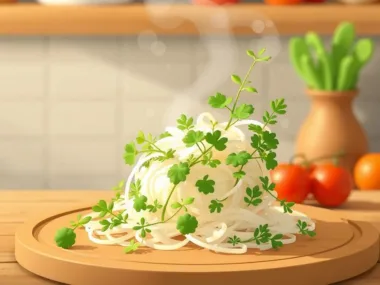

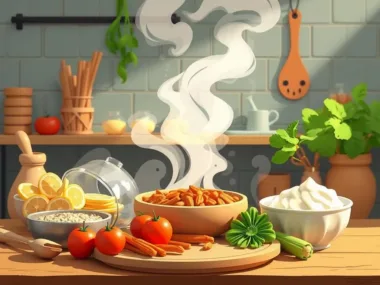



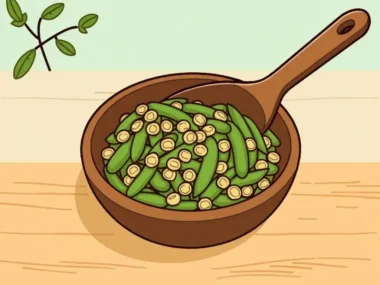
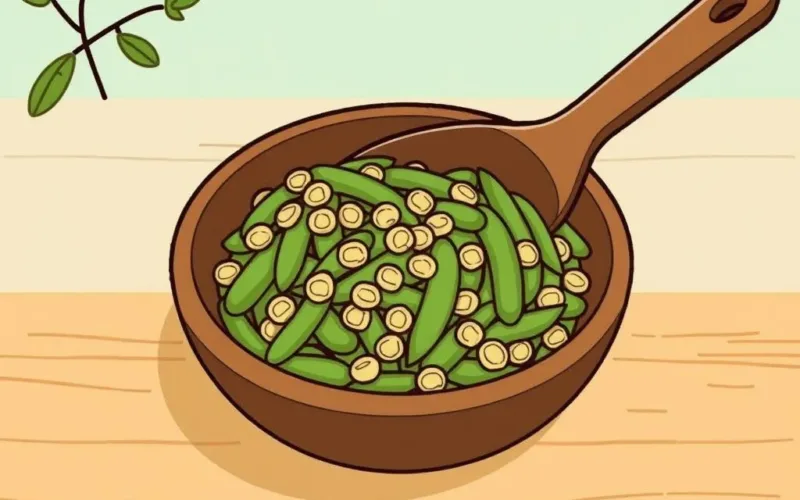



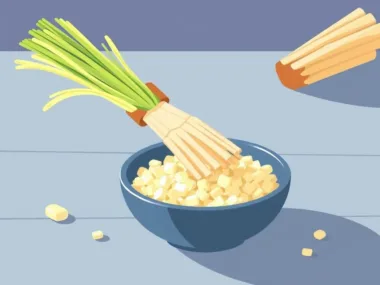
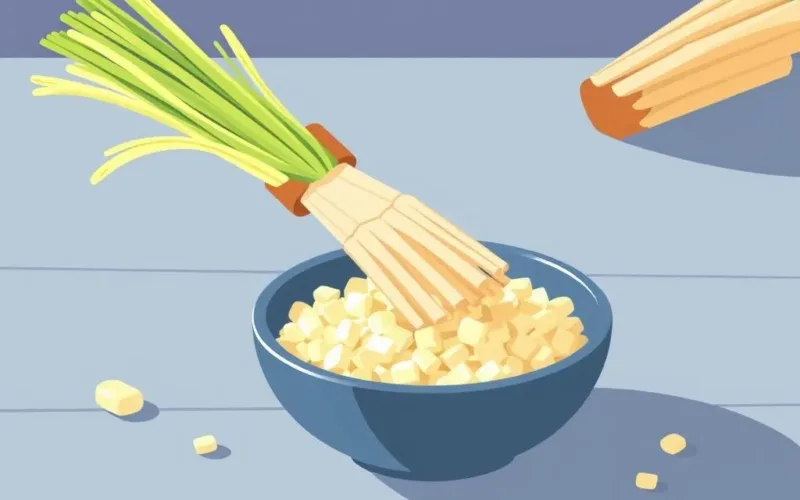
Leave a Reply